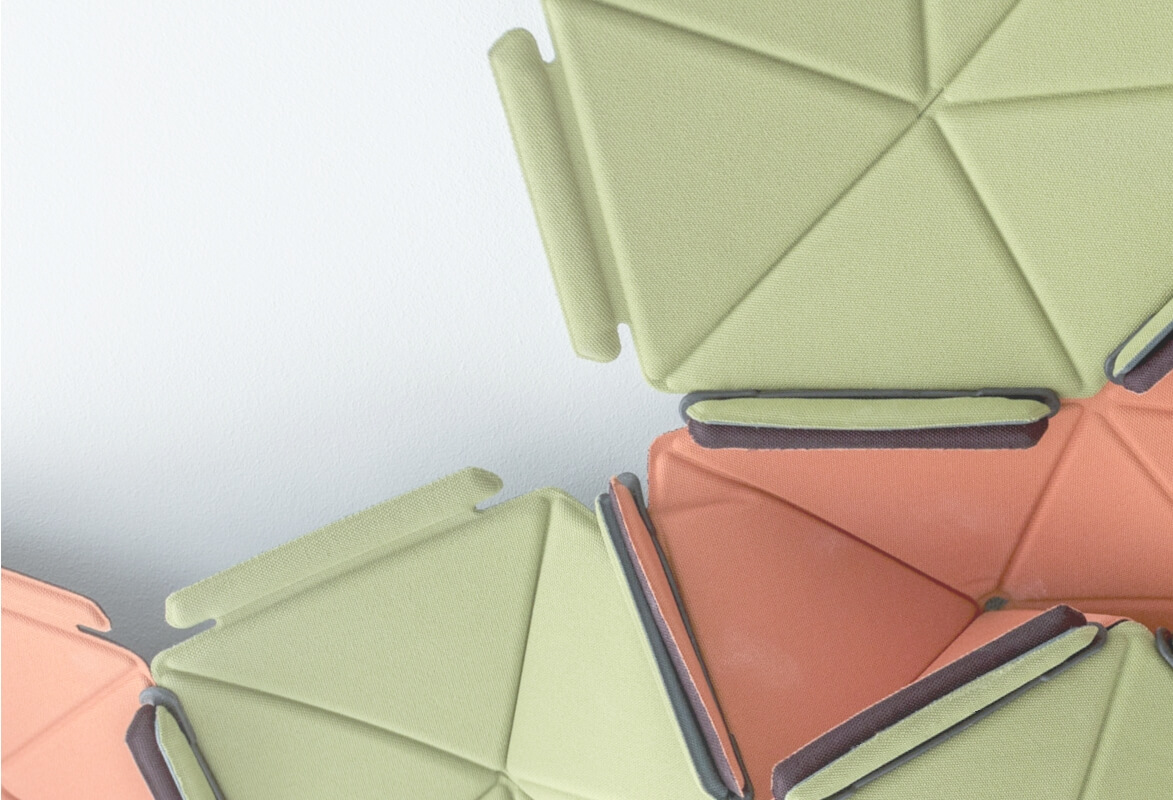
Circular construction with Lean2Cradle® Construcía
With Lean2Cradle® Construcía we are able to reduce the two main negative impacts of the construction sector: the toxicity of materials and the creation of waste. This is possible thanks to the fusion of the paradigm of circular economy Cradle to Cradle (C2C) with Lean Construction methodology.
The Cradle to Cradle paradigm defends a system of regenerative production in which the materials that compose a product are cyclable; that is, they can be re-used indefinitely and safely for people and the environment.
To ensure this cyclability it is necessary, on one hand, to select materials without harmful elements, and on the other hand, to define now in the design phase how they will be used after their first useful life, to design the product according to that planned circular path.
This paradigm applied to construction means that the buildings gain value with time. In addition, circular construction does not generate waste, because now buildings are conceived as quarries that will have other uses in the future.
And not only that, the spaces constructed with our methodology are healthy and contribute to the well-being of the people that inhabit them, because they are designed and built with the persons who are going to use them in mind.
The second pillar of Lean2Cradle® Construcía is the Lean Construction methodology, a system of project management that is able to optimize the processes and reduce the risks inherent to the sector, such as cost overruns or late deliveries.
With the merger of C2C and Lean Construction, we have found the formula to compensate the higher cost that circular materials can have with a reduction in the operating costs, the reinvestment costs and the execution time.
Characteristics of Lean2Cradle® Construcía
- It dispenses with all that consumes resources and does not provide value to the client’s needs.
- It involves the entire value chain from the beginning, with the purpose of ensuring the sustainability and profitability of the project.
- It offers solutions that optimize the price and reduce the completion periods.
- It prioritizes transparency in the processes, materials and budgets.
- It focuses the design on people
Advantages of Lean2Cradle® Construcía

20%
increase of the production in our spaces
Control of the intrinsic risks of the sector.
50%
reduction of absenteeism in our spaces.
Positive effects on people’s health and the environment.
20%
return of the investment in the future
More efficient and profitable processes of construction
100%
sustainable: zero waste and re-use of the resources.
Obtaining of BREEAM®, LEED® and C2C® certifications.

20%
increase of the production in our spaces
Control of the intrinsic risks of the sector.
50%
reduction of absenteeism in our spaces.
Positive effects on people’s health and the environment.
20%
return of the investment in the future
More efficient and profitable processes of construction
100%
sustainable: zero waste and re-use of the resources.
Obtaining of BREEAM®, LEED® and C2C® certifications.
Pillars of Lean2Cradle® Construcía
Cradle to Cradle Construcía
The paradigm of design Cradle to Cradle (C2C) has taught us that the best way of being sustainable is to imitate nature, where the waste of one system is transformed into nutrient for another. Nothing is wasted. Nothing is waste.

Lean Construction
Lean Construction is a methodology of construction project management that eliminates the processes that do not add value to the final product and prevents the squandering of materials, time and human resources.
Material Passport
The Material Passport is the identity document of materials, and constitutes the first tool in decision-making of circular construction that we carry out in Construcía.
Welcome to a change of model: circular construction
Lean2Cradle® Construcía makes it possible to disconnect economic growth from the massive consumption of raw materials by the application of the principles of the circular economy. Added now to the values of linear construction —price, period and quality—, are the values on which our model is based: health, cyclability, residual value and productivity.
The linear model that still prevails (extract, use, discard) is no longer sustainable. The resources are being depleted and the planet is suffering the consequences of a way of producing inherited from the industrial revolution that no longer has any place in our time.
With regard to the waste materials, the figures of our sector give us much to think about: the construction industry is one of the sectors that generates most waste in Europe, between 25% and 30% of the total.
Because of this, the current trend in all the industries is to seek alternatives that contribute to sustainable development. While the linear model generates waste at all the stages of production, the circular economy proposes rethinking the model: a more efficient use of resources and a greater commitment to the environment.
Following our values of excellence and continuous improvement, since we decided to create the methodology in 2015, we have tested, corrected and perfected it. And since 2018 Lean2Cradle® Construcía is a reality. We can now say that it is feasible to construct with the circular method, generating a minimal amount of waste that will continue decreasing, being competitive in costs and time periods, meeting commitments to the client and maximizing the value we deliver.
You want to know more?

Subscribe to our newsletter to know more about us









